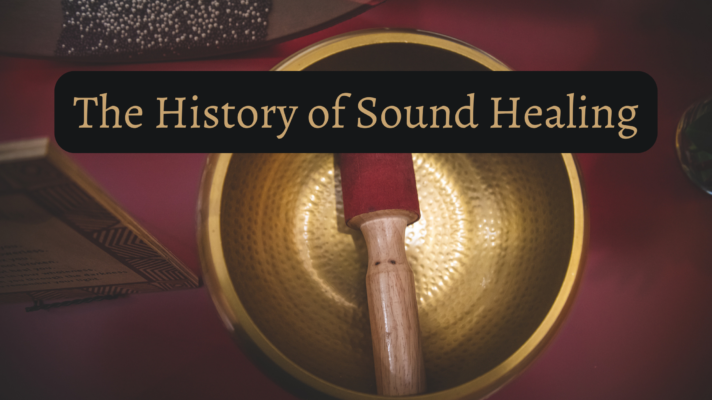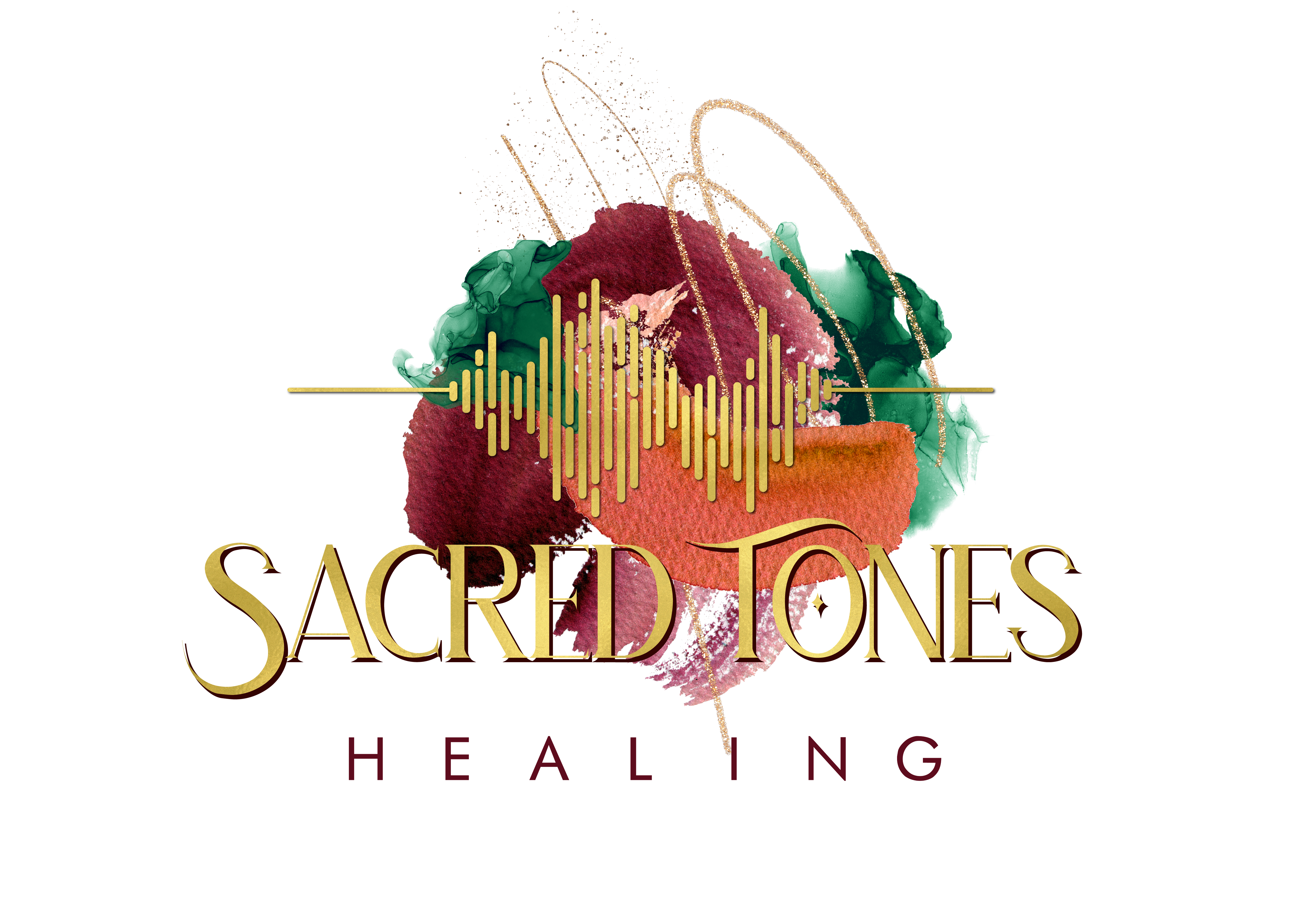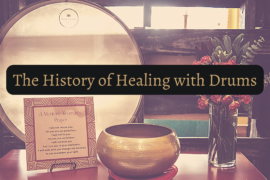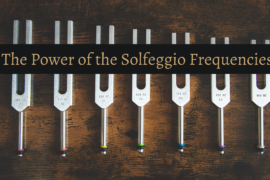

The History of Sound Healing
- March 10, 2022
- by: Jen
Music was never invented or discovered; it’s just something innate in us, a part of the cycle of natural life. From macrocosm to microcosm, we all exist and live in a sea of vibration – the source of all forms. Plus, we’ve all experienced the healing power of sound.
The cliché “music is the universal language of mankind” takes meaning by looking at the universe itself. We use music for entertainment, expression, celebration, and communication. Whether we are musically inclined or not, sound is the one thing that genuinely connects humans from all cultures and corners of the Planet.
While geneticists have decoded our DNA’s musical expression, NASA also has captured the sounds of all the planets, and the European Space Agency’s Rosetta probe recorded the sound of a comet. The ancient man perceived the sound of the wind, the rustling of leaves, and tall undulating grass as appealing sensations. It’s only natural that our bodies respond to therapeutic sounds.
American researchers first found a connection between sound and healing in 1896, noting that music could improve blood flow and even improve thought processes. Sound healing therapy uses aspects of music to enhance physical and emotional health and well-being. Truth be told, anyone who listens to music can state that sounds play an essential part in our emotional lives. Music can make us feel positive feelings like happiness or relaxation.
Human life is based on rhythm. Seasonal changes, day and night, and all physiological and biological functions are rhythmic. Sleeping, eating, walking, talking, and all life functions are rhythmic.
Sounds are created of vibrations, which affect the world around them. Organisms have their vibratory rates, and objects have their resonant frequencies. If an object is struck and placed next to or touching another object, the other object will begin to vibrate too. These vibrations affect people as well, at even an atomic level. The right combination of sounds can organize the neural activity that stimulates bodies, leading to different emotions.
When sound waves reach our ears, they are converted into electrical signals that travel into the auditory cortex, where sound is processed. Then, a response is triggered in our bodies. This whole process alters our emotions, releases hormones, and triggers certain impulses.
For example, neurological studies proved that listening to music makes us more productive and creative. Sounds can relieve stress and improve our moods. This happens because listening to music floods us with dopamine. It also releases oxytocin, a hormone that allows us to bond with others.
According to the American Institute of Stress, up to 90% of doctors’ visits are stress-related. And since research linked music to several health benefits, from boosting immune function and lowering stress levels to improving the health of premature infants, sound therapy became very popular.
In sound healing therapy sessions, sound waves are directed at specific parts of the body, in a similar way to acupressure. There are many ways to create and transmit the sounds, but often chanting bowls or electronic equipment are used. While some therapists try to create harmony between the left and the right sides of the brain, others aid in the practice of meditation as part of religious or spiritual experience. These processes are believed to promote states of harmony and health.
Researchers began to study the application of music in medicine near the end of the 19th century. Studies reporting the effects of music, such as cardiac output, respiratory rate, pulse rate, and blood pressure, were initially reported in the late 1700s by Diogel. He used to bring live musicians by his patients’ bedsides to conduct his experiments. His first scientific work was published in 1880, where Diogel showed that music lowers blood pressure, increases cardiac output, decreases pulse rate and assists the work of the parasympathetic system.
Diogel’s work was replicated later by Tarchanoff, a professor of medicine at the University of Moscow. Dr. Alexander Borodin, professor of medicine and chemistry, musician and composer, used to play for patients while Tarchanoff recorded the effect of music on their vital functions. In 1903, Tarchanoff published his paper and dedicated it to Borodin.
Even Pythagoras is credited as “Father of Mathematics”; he was also known as the “Father of Music and Harmonics”. He taught his students to use sound and music to soothe their spirit, release fear and anger, and enhance joy and happiness. Pythagoras discovered the beauty of harmonic intervals as a mathematical concept, bringing together the idea of certain sounds creating a pure sensation that could make “soul adjustments”. He was the first person to prescribe music as medicine.
Now, we can physically prove how our brain lights up when listening to different sounds while undergoing an MRI. Even since ancient times, sound was recognized to elicit altered states and emotional responses that were harnessed to improve wellbeing.
These days, sound healing may seem like the latest new trend, but in fact, music existed way before there was a Neolithic man to describe it in musical notes and terms.
When referring to manufactured music, archaeologists and anthropologists have deciphered communications of Sumerians on the walls of their caves to have unique accents like musical notes to introduce modification and modulation of sounds.
Positive effects of music date to ancient Greece, when it was believed that sound can cure mental disorders. Throughout history, music has been used to boost morale in military troops, and even ward off evil spirits by chanting.
Our ancestors embraced music as the essence of life itself. Shamans worldwide have always used the repetitive beating of drums to transcend to an altered state of consciousness, capable of mental and physical wellbeing. For a long time, the practice of medicine and healing was the domain of religious and spiritual authorities. Although it has been superseded by modern science, these traditions continue to date.
Written history finds references to healing temples built to harness the three powerful universal forces: sound, light, and magnetics. Tracing back to Egyptian pyramids, Greek Asclepian temples, and the Gothic styles of cathedrals and churches, we observe common themes of resonant architecture.
Many ancient sites were built near the sea or river, containing relaxing, therapeutic sounds. Temples were constructed on magnetic vortices with architecture designed to capture the power of sound and light waves.
Most of us have heard of the Tibetan or Himalayans healing singing metal bowls known as rin gongs or suzu gongs used in spiritual and healing ceremonies conducted by monks. These are used in mindfulness practices and yoga studios or as part of rituals. Alchemy crystal singing bowls are both medical devices and instruments. These bowls are thought to have ancient histories; however, tradition tells us that ancient Tibetans were much more likely to have used bells and chimes during their religious ceremonies. The bowls used today, which gained popularity in Western cultures, are a more modern interpretation of these sound-creation techniques.
The ancient Egyptians also used music for healing. Their papyrus texts described musical incantations for healing and a certain kind of instrument that generated an “ultrasound” for healing.
When talking to the medical powers of sounds, Greek physicians used flutes, lyres, and zitters to heal their patients. They used vibration to induce sleep, aid in digestion, and treat mental disturbances.
Christianity too has also long embraced sound as part of its tradition. In the Bible, we hear “in the beginning was the Word” and “make a joyful noise unto the Lord”. So, cathedrals and churches were designed to create an opportunity to talk to God by singing and chanting.
The first known use of sounds as a healing force comes from the Australian Aborigines. They used an instrument – didgeridoo, as a healing tool for more than 40,000 years. The Aborigines uses it to heal broken bones, muscle tears, and other illnesses.
Yogic and Chinese traditions also use certain spoken sounds known as “bija” which relates to mystical “seed syllables” contained within mantras (healing prayers). Chanting is particularly powerful in healing. It was thought to create an opiate effect in the body that can help to overcome mental and physical pain and injury.
Sound healing had pretty much disappeared in the Western world until the 1930s, when researchers discovered ultrasound and its medical properties. Music therapy expanded in the 1940s thanks to the French otolaryngologist, Dr. Alfred A. Tomatis, who started working on rehabilitating people with damaged hearing by playing the sounds they could no longer hear using an electronic device that stimulated the muscles of the inner ear. He also found that the same type of sound therapy could be used to treat learning disabilities, dyslexia, attention deficit disorders, autism, and sensory processing and motor-skill difficulties. His method also has helped adults fight depression, learn foreign languages faster, and improve creativity.
In the 1960s, English osteopath Sir Peter Guy Manners focused on using audible voice frequency in several different treatments. He used these methods to study and also treat chronic inflammation, arthritis, and bone calcification.
In the late 20th century, Fabien Maman, French musician, acupuncturist, composer, and bioenergetic researcher, also emerged in the sound therapy field. He discovered the use of tuning forks in sound therapy, which are now used in sound healing and can communicate vibrations to the body, DNA cells, and the magnetic field.
More recently, science started codifying some ancient and modern techniques through studies that investigate how sound can heal. Most focus on how chemicals are produced in the reward centers of the brain when listening to music or certain sounds.
Today, sound healing, using the correct frequencies in the right combinations, is an effective form of treatment for several disorders that can help heal our body and mind!
References:
https://www.ncbi.nlm.nih.gov/pmc/articles/PMC2766288/
https://www.healthline.com/health/sound-healing
https://www.massagemag.com/the-history-of-sound-healing-29245/
https://www.sleephub.com/blogs/articles/the-science-and-history-of-sound-therapy
https://soundtherapy.education/history-of-sound-healing/
https://www.medicinanarrativa.eu/sound-therapy-and-well-being-some-scientific-studies
https://www.nytimes.com/2012/08/12/jobs/how-music-can-improve-worker-productivity-workstation.html
http://www.downloads.imune.net/medicalbooks/Neurochemistry%20of%20music.pdf
YOU MIGHT ALSO LIKE More From Author
The History of Healing with Drums
- April 20, 2022
- by: Jen
Humans are social species, and we all love a good beat. And guess what? Being able to feel rhythm and
The Powerful Solfeggio Frequencies
- April 6, 2022
- by: Jen
Sound is one of the purest forms of energy that corresponds to emotions. The fact is, music has a profound
Cymatics: The Science of Sound
- February 17, 2022
- by: Jen
“There’s no organ system in the body that’s not affected by sound and music and vibration.” —
Our Favorite Zero-Waste Products
- April 13, 2021
- by: Jen
The Zero Waste movement is alive and growing, and for good reason. The average American produces 1,704
How to Make Your Beauty & Wellness Routine More Sustainable
- March 15, 2021
- by: Jen
When it comes to sustainability and waste reduction, most of us tend to focus our attention on what happens
Why Reducing Inflammation is Vital to Your Health
- November 10, 2020
- by: Jen
Inflammation has become a hot topic in the health world over the past few years, and for good reason,
recent post
The History of Healing with Drums
Apr. 20.2022The Powerful Solfeggio Frequencies
Apr. 6.2022The History of Sound Healing
Mar. 10.2022Cymatics: The Science of Sound
Feb. 17.2022The Best All-Natural DIY Face Masks
May. 4.2021







